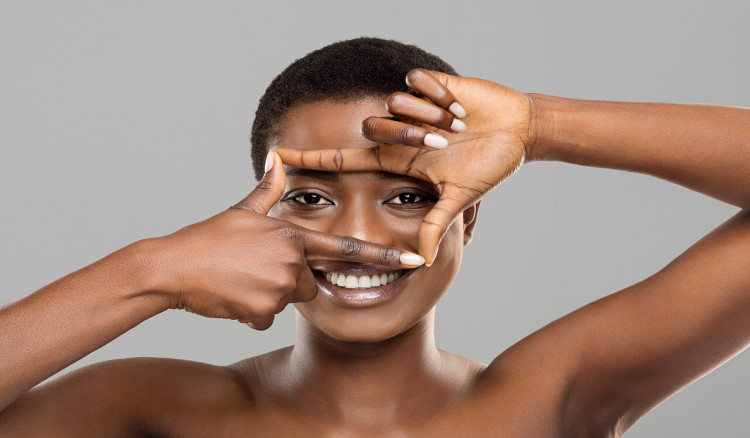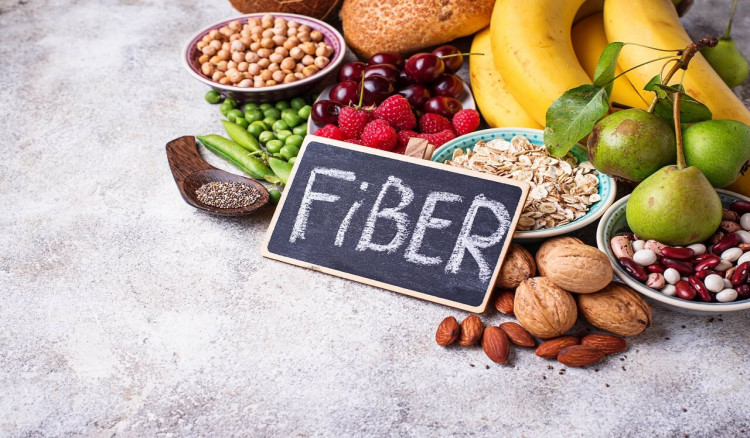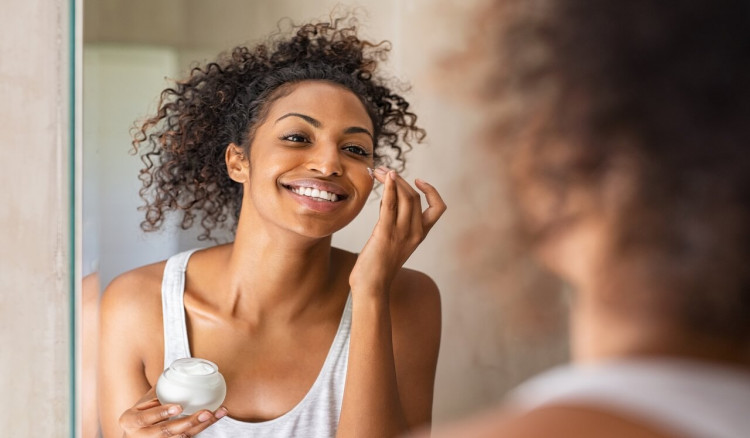
The Best Nutrients for Healthy Eyes
The eye is like a camera. The front part consists of the cornea—the transparent area in the center—surrounded by the sclera, as the white of the eye is called. Behind the cornea is the colored part, or iris, in the middle of which is the pupil, which, like a shutter, grows larger or smaller to control the amount of light let into the ‘camera’
The clear, transparent lens, located slightly in the back of the iris, focuses the image on the retina, which is about three-quarters of an inch behind the lens. The optic nerve carries the image from the retina to the brain. The eye also contains muscles to help do this work and different types of fluid to keep the parts in good working conditions.
Most people consider blindness an affliction to be avoided at all cost. Yet an amazing number of individual live with a partial loss or distortion of sight without being aware of it; they simply assume that the world is as they see it. If you have to hold a book close to your nose to make out the words, or are holding it at arm’s length, the chances are that you should have your eyes examined.
Even people who know they need their vision corrected put of an examination perhaps because they don’t like the idea of wearing glasses. Serious eye conditions have been neglected in this way, sometimes with tragic consequences. Yet the reward of a periodic eye checkup is often a brighter and clearer world.
Young children should have a vision test well before they start school, preferably by the age of three or four. There are ways of testing the eyesight of children who do not yet know their letters so don’t put off an eye examination simply because your three-year old has not yet mastered the alphabets.
Usually a test can be done during the child’s regular pediatric checkup. If an obvious eye problem is noticed—such as a turned or crossed eyes, sties, inability to see a dim light, constant rubbing of the eye—the child should have immediate attention.
The younger the child, the easier it is to reverse certain eye conditions.
Remember that any sudden change in your vision needs looking into because it could be the symptom of an illness. But aside from the important periodic eye examination, what else can you do to protect your eyes?
Protect The Eye Against Injuries
The eyes are amazingly well protected by the bony forehead and cheek-bones, and by the quick reflexes of the eyelids. Still, you cannot be too careful about guarding your eyes against accidents at home or at work. Some of the chemicals most damaging to eyes are right in your kitchen!
Be sure to read all the small-print precautions on cleaning and woodworking fluids, and never throw out the label; it may contain information important to the doctor in an emergency. If such fluids do get into your eye, immediately run as much water into the eye as you can.
Speed in irrigating the eye after injury is extremely important to prevent damage. If there is redness and pain, keep up the irrigating process for at least thirty minutes. An injured eye should always be checked by a doctor
Guard Against Eye Infections
Many infections affect the eye, the most common of which is conjunctivitis, or pink eye, which is often contracted at public swimming places. Conjunctivitis is extremely contagious; so it is important that the sufferer does not share washcloths and towels with other people and that he wash his hands after touching his face.
The symptoms of conjunctivitis—redness, sticky discharge—are similar to those of other types of eye infection, so don’t attempt to treat the condition at home. A doctor can make a proper diagnosis and prescribe the appropriate medications that will clear up the condition.
Women should avoid any eye cosmetics that claim to dye the lashes for longer than a day. Such eye makeup may be harmful. Mascara is usually harmless, however, unless you experience an adverse reaction to it; but all eye cosmetics should be washed off at night.
Prevent Eyestrain
Eyestrain is probably the most common eye complaint. It is usually caused by overtiredness (from lack of sleep) or by glare (from too much screen time), such stress reddens the eyes and makes them dull.
Can eye drops help eyestrain? No. Popularly advertised preparations for ‘tired eyes’ do nothing that your own natural tearing (which is slightly antiseptic) and a night’s rest won’t do better. You can take care of the symptoms of eyestrain by resting the eyes, or by putting a few drops of cold water (not boric acid solution) in the eye.
The best cure for eyestrain is to end the conditions that are causing it. Improper lighting, especially when reading can cause eyestrain, but it doesn’t cause permanent damage to the eyes. Be sure that your light bulbs are strong enough (75 to 100 watts) to furnish proper lighting. Hold your book or paper about 40 to 45 centimeters away from your eyes and a little lower than eye level.
Reading when you are lying on your back in bed or propped up on an elbow will strain your eyes, and so will reading for a long time in a moving train or car. Rest your eyes from time to time by looking off into the distance.
If you are in the bright sun, sunglasses will protect your eyes from glare. In selecting a pair of sunglasses, make sure they noticeably reduce the brilliance of bright sunlight. If you already wear ordinary glasses for reading and or distance viewing, have a pair of sunglasses around to your prescription rather than clip a pair of possible inferior sun screens over your carefully made regular lenses.
Remember, sunglasses never make it safe for you to look directly at the sun—even during an eclipse!
Movies and television can cause eyestrain if viewed for long periods. Looking at a flickery motion picture, sitting too far on the side of a theater, or watching television in too dark a room can tire your eyes. Children’s television habits should be controlled so that they give their eyes (and minds) a rest after about an hour of watching. Neither you nor they should sit too close to the television set, 2 meters is a minimum distance.
Eyeglasses
A most important source of eyestrain is in the eyes themselves. A large number of people are nearsighted, farsighted or astigmatic—conditions usually caused by irregularities in the shape of the eyeball. Fortunately, these conditions are readily corrected by wearing the proper eyeglasses.
Ideally an opthamologist (eye specialist) should conduct the eye examination and make out your prescription for glasses. If an opthamologist is not available, a good optometrist can perform the same service.
Don’t buy over-the-counter glasses simply because they seem to fit your immediate needs and are less expensive; the cost to your eyes may be incalculable.
Athletes and people who find regular glasses inconvenient or object to them for cosmetic reasons have an alternative—contact lenses.
More expensive than glasses, these tiny lenses ground to your own prescription, are worn right over the cornea, and are practically invisible. The closeness of the lenses to the eyes makes them actually more effective than regular glasses for some type of vision disorders.
Wearers of contact lenses should take scrupulous care in washing and sterilizing the lenses and must follow their doctor’s directions exactly. Great care must be taken to avoid infection, irritation and eye fatigue.
Wear the lenses no longer than your doctor suggests and consult with her as soon as you feel any discomfort or pain. It is necessary to return for a checking up every six months to a year. Contact lenses are advised for people with corneal scratches and scarring or inflammation of the eyes
Aging and the Eyes
As we grow older, the lens of the eye, which automatically contracts or relaxes to adjust our focus, becomes less elastic. At age 45, the lens is only about half as elastic as it was at age 30. After age 45, most people need reading glasses. The condition—known as presbyopia—is progressive; that is, it tends to get worse as age increases, so that the glasses may have to be changed every one to three years.
Glaucoma, one of the most widespread causes of blindness, particularly affects people over age 35. If you have glaucoma, or even a tendency toward it (your doctor can tell you), you should be aware that the use of antihistamines and certain sleeping pills or tranquilizers can be dangerous; many of these preparations contain ingredients that increase the pressure in the eyeball.
Best Nutrients for Healthy Eyes
The eye is a major sensory organ that requires special care for a healthy and productive lifestyle. The human eye is constantly exposed to sunlight and artificial light. Exogenous sources of reactive oxygen species (ROS) such as UV rays, visible light, ionizing radiations, chemotherapeutics, and environmental toxins, contribute to oxidative damage in the eye tissues. In the long-term, such injuries expose the aged eye to considerable risk of the pathological consequences of oxidative stress. While this affects practically all organs and apparatuses, it has a heavy impact in causing eye diseases such as glaucoma, dry eye and age-related macular degeneration. The following nutrients are therefore needed to protect and keep the eye healthy
ANTIOXIDANTS
To combat the oxidative stress and damage the eye goes through, antioxidants are therefore needed to combat these attacks to the eye.
Omega-3 polyunsaturated fatty acids (PUFA) are good antioxidants and they are essential to the proper functioning of the human organism, as they are fundamental elements of cells and nerves. Some natural food sources of Omega-3 polyunsaturated fatty acids (PUFA) are: mackerel, soya bean, walnut, oyster, chia seed, flax seed, sardines
Other good antioxidants you can consume are Vitamin A, Vitamins C and E
LUTEIN
Numerous studies have identified lutein and zeaxanthin to be essential components for eye health. Lutein and zeaxanthin are carotenoid pigments that impart yellow or orange color to various common foods such as cantaloupe, pasta, corn, carrots, orange/yellow peppers, fish, salmon and eggs.
Their role in human health, in particular the health of the eye, is well established from epidemiological, clinical and interventional studies. They constitute the main pigments found in the yellow spot of the human retina which protect the macula from damage by blue light, improve visual acuity and scavenge harmful reactive oxygen species. They have also been linked with reduced risk of age-related macular degeneration (AMD) and cataracts.
To have strong and healthy eyes, ensure to consume foods rich in lutein and antioxidants or take recommended supplements containing these nutrients.
References
The Effect of Lutein on Eye and Extra-Eye Health by Silvio Buscemi, David Corleo, Angela Satriano et al
The Eye, Oxidative Damage and Polyunsaturated Fatty Acids by Sergio Claudio Saccà, Carlo Alberto Cutola, Daniel Ferrari et al
Dietary sources of lutein and zeaxanthin carotenoids and their role in eye health by El-Sayed M Abdel-Aal, Humayoun Akhtar, Khalid Zaheer and Rashida Ali






Share This Article: